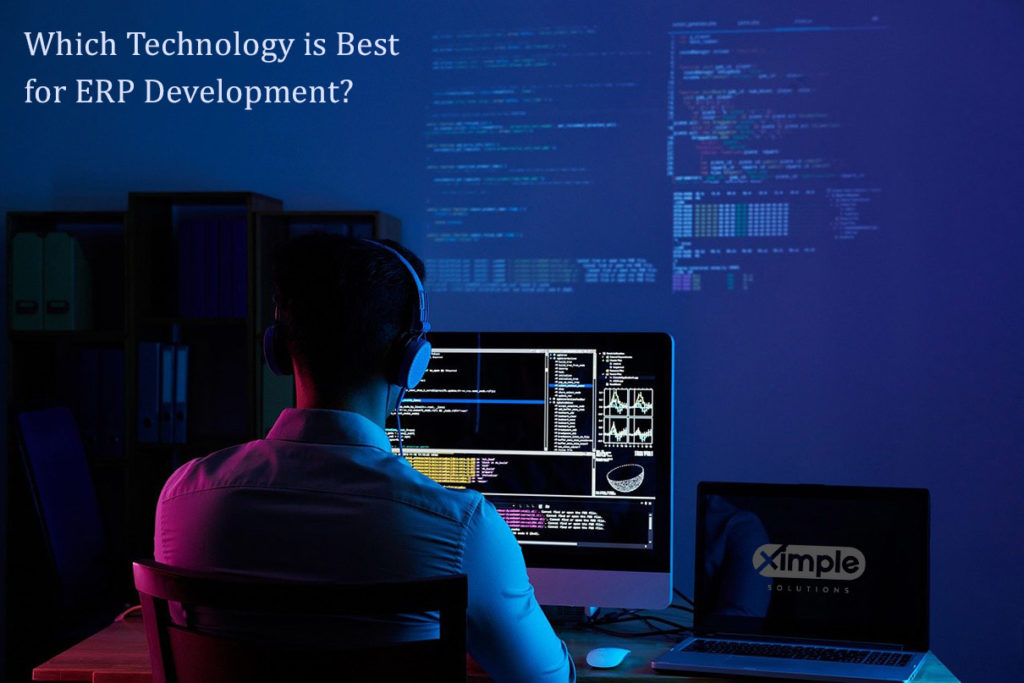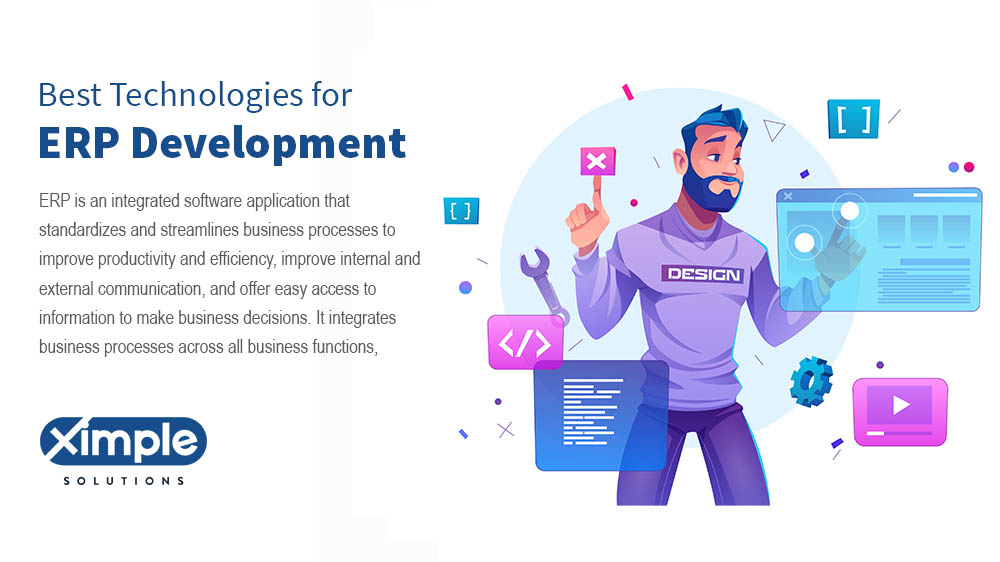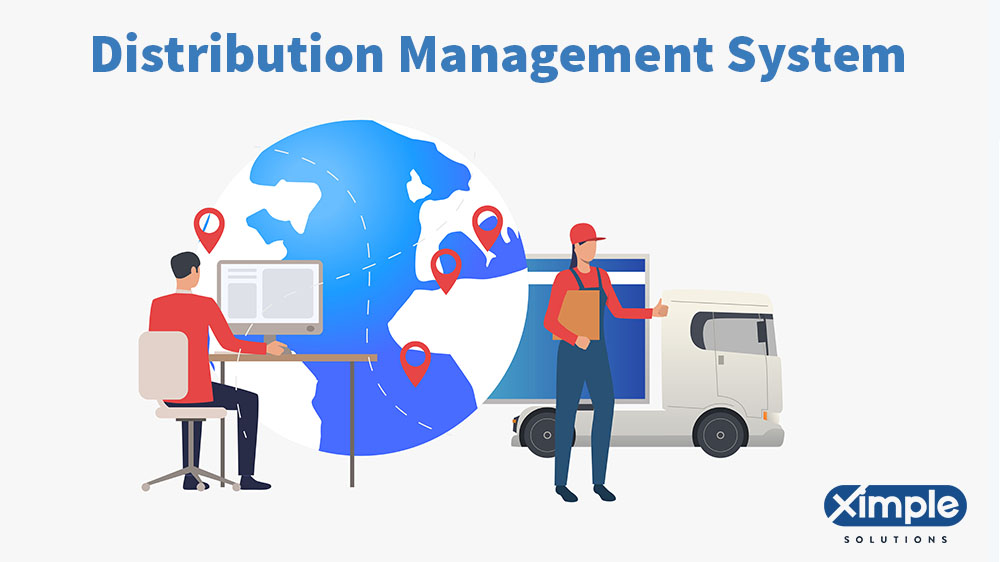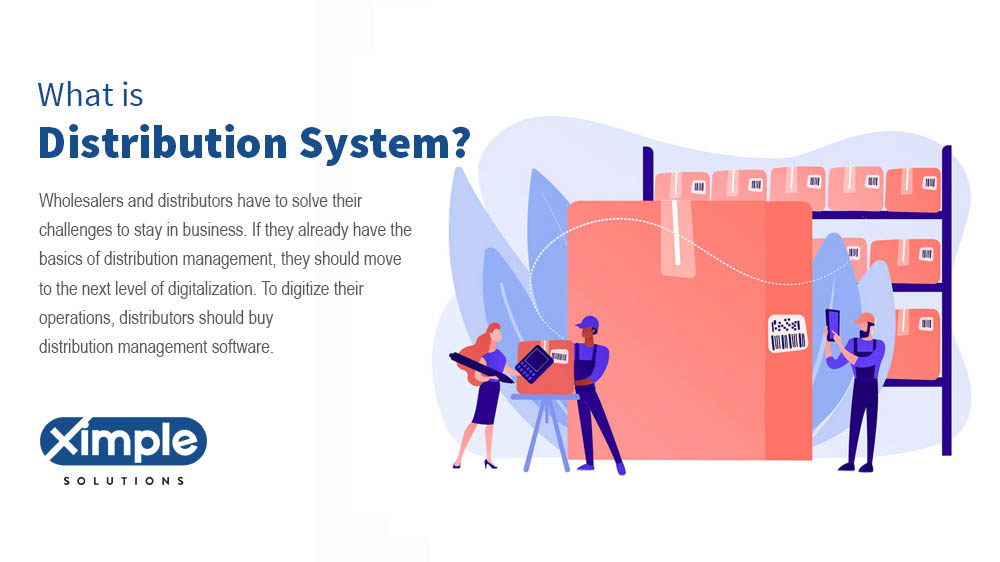Best Technologies for ERP Development | React ERP | Angular ERP
ERP is an integrated software application that standardizes and streamlines business processes to improve productivity and efficiency, improve internal and external communication, and offer easy access to information to make business decisions. It integrates business processes across all business functions, including accounting, finance, human resources, purchasing & procurement, distribution, manufacturing, warehousing, inventory management, sales, and other departments. Enterprise Resource Planning (ERP) systems operate on an integrated software platform using standard data definitions working on a single database.
Manufacturing companies designed and leveraged Enterprise Resource Planning to drive operational efficiencies. All industries, including Wholesales and Distribution Industry, Retailers, B2B and B2C eCommerce, service industries, education, hospitality, health care, financial services, and government have adapted and leveraged ERP concepts to streamline and integrate business processes to stay competitive
The initial steps to integrate business processes with technology started in the 60s with Inventory Control (IC) applications. These early applications were developed in COBOL or Fortran (Two primary computer languages). Suppose you are designing Enterprise resource planning ERP or exploring the Next Generation of ERP. In that case, please explore Angular & React for frontend ERP technologies, API, and Microservices as middleware for easy integration with in-housed build solutions, cloud and Hybrid systems, and Java as backend. Regarding Databases, one has many options from MS SQL, MySQL, IBM DB2, ORACLE SQL, Postgre SQL, etc.

Table of Contents
- What is Angular & React Technologies for ERP?
- Similarities and Differences Angular vs. React in ERP Development
- Benefits of Angular Technology for ERP System
- What’s the API framework? What are Micro-services?
- What are best framework for ERP in Java?
- ERP Framework: J2EE vs. Spring
- Benefits of J2EE Framework
- Foundation for future
- Risk-Free Technology for Next Generation ERP- Angular, APIs, Microservices, and J2EE
- Conclusion
What are Angular & React Technologies for ERP?
Angular or Angular 2.0 is an open-source JavaScript framework that emerged in September 2016. The Angular Team from Google and the Angular developer community run the framework. Angular software architecture is for doing web and mobile development. It is an amendment of Angular 1.0 or AngularJS that launched in 2010. Until now, six editions of the Angular JavaScript framework exist.
React is a JavaScript Library ideal for UI development. It aids the development of user interfaces. The team behind React development and administration is Facebook’s community of developers. React came to be in May 2013 and has been used in various projects, including the React ERP.
We will describe and compare Angular and React to help you understand them well. Additionally, we will reveal different types of Java frameworks. So, welcome, and keep on reading.
Similarities and Differences Angular vs. React in ERP Development
Are angular and React similar? Yes, they are alike in that they are both programming languages. They are more different than they are alike, however. Brief differences between them include:
- While angular is a complete framework with everything, React is only a Javascript library. It came before Angular, so it is a lot older than Angular.
- Ease of learning – It is harder to learn Angular as a novice, and it calls for intense training in Angular school. In contrast, React JS is easier to understand if it is the only thing you want to learn. When it includes Redux, React becomes harder to grasp.
- Installation ease – You can install Angular faster than React. However, you will need more coding time with Angular and less with React. Ultimately, you can work more quickly with React to build ERP from scratch.
- Libraries – React contains other types of programming libraries. In contrast, Angular is a complete solution for the building.
- Open-source community support – Angular has a more dependable community of developers. React does offer community support, but it is not reliable.
- Data Binding – In angular, the data binding method is two-way. When you make any change, the model state updates automatically. On the other hand, React uses the one-way data binding method. Before you change elements, you should update the related model state.
- Debugging/testing – When testing and debugging finished a webERP software or any other in angular, you can use one tool. In contrast, you require multiple tools to debug and test a project in React.
- Versatility – React is more versatile than Angular when choosing tools, libraries, and libraries for developing an app.
- Types of apps – When you develop hybrid apps, native apps, or web apps, you should use React. On the contrary, use the Angular JS framework when developing a mobile app or a Single Page Application.
- Updates and documentation – React undergoes regular updates. The updates are easy since scripts can facilitate migration. Thus, the documentation in React is quite fast. On the contrary, Angular is an ongoing development process that affects the release of updates. They come out every six months, and this slows down documentation. Even though slow, developers tend to have time to make alterations before the migration process.
- Type of model – Angular foundation is MVC or Model View Controller. Quite the reverse, React’s model is Virtual DOM.
- Writing style – Angular uses TypeScript, while React is JavaScript.
- Application in real life – Companies that prefer Angular include Beam, Mesh, Streamline Social, Auto Trader, Wepay, and more. Top users of React are Facebook, Pinterest, Uber Technologies, Instagram, and Netflix.
- Angular uses code that offers pre-made elements for making Java an open-source ERP system, CRM, or a different software tool. But it is not possible to add a JavaScript library to a source code. React lets the developer make the code based on the format they choose. It is easy to add a JavaScript library to a source code.

Benefits of Angular Technology for ERP Systems
If looking for high productivity when doing an ERP project in Java, choose Angular. It includes ready-to-use solutions that can let you create applications with many features. It has the following benefits:
- It supports error-free code development
- Angular is a more modern, high-performance programming language
- You can shift from one view to another because Angular allows routing
- Angular CLI facilitates seamless updates.
What’s the API framework? What are Micro-services?
The Application Programmer Interface (API) Framework is a technique that programmers use to interface with software applications. The open-ended Java API framework has many uses. When shopping online with your card, API helps to transmit your card details to complete a transaction. After integration with various company APIs, the API Framework can securely send even the most sensitive data.
Java Microservices framework includes a group of software applications designed in the Java Programming Language. They make use of the massive system of Java frameworks and tools. A single microservice boasts minimal abilities and is responsible for one specific task. That is why microservices deliver consistency, efficiency, and quality in the outputs and workflows.
What is the best framework for ERP in Java?
First of all, a Java Framework is an assortment of pre-made codes for developing web applications. It is the framework that a developer uses to write codes for creating an application. But what is a framework in Java? A framework has pre-defined classes and functions (codes) in which a developer can add their code to solve a problem. There are different kinds of Java Frameworks that can be used in ERP. The most popular ones include:
- Spring – A lightweight, easy-to-test Java framework designed for JEE.
- Hibernate – It is a portable and productive open-source Java application development framework. It allows a developer to launch communication between RDBMS and Java.
- Play – It is a unique Java Framework that follows the Java MVC framework and is ideal when making a very scalable application. It requires no configuration and works with the most common IDEs.
- Google Web Toolkit – The GWT is an open-source framework. It lets a developer write a client-side Java code. GWT is ideal for creating the most complex browse applications. They can use the GOOGLE API to do the task.
- JavaServer Faces is an Oracle Java UI framework perfect for developing user interfaces for Java applications. Like Play, it uses the MVC design method.
ERP Framework: J2EE vs. Spring
Java 2 Platform, Enterprise Edition (J2EE) belongs to Oracle. It entails Java micro-services patterns, web services, and distributed computing. It is a reliable application platform whose core components are Java Server Pages, Java Database Connectivity, and Enterprise Java Beans.
Java Spring Framework is an open-source framework for Jave EE. As it has several extensions for building large-scale apps over the Java EE platform, the Spring Framework uses Plain Old Java Object (POJO). One common thing about J2EE and Spring Framework is dependency injection. Here are the differences between J2EE and Spring Framework.
- Architecture – J2EE entails three architectural frameworks: logical tiers, client tiers, and presentation tiers. In contrast, Spring Framework consists of a layered architectural skeleton with several modules.
- Language – Spring lacks any specific programming model, while J2EE uses an advanced object-oriented language with particular syntax and design.
- Interface – Syntax in Spring Framework is the same. It does not depend on a compiler or IDE. On the contrary, J2EE is a Java GUI framework designed from Abstract Window Toolkit APIs.
- Structure – J2EE may be a web-based Java web development framework or a non-web-based one. Spring Framework’s foundation is around twenty modules.
- Swiftness – Spring Framework is slower than J2EE.
Benefits of the J2EE Framework
J2EE ERP Framework has the following advantages:
- Records show that J2EE leads to the development of more secure, reliable, and scalable Java ERP solutions.
- You can use J2EE on several platforms
- It enables cross-platform portability
- Complex, high-level applications are easy to handle over J2EE
- Several successful projects exist to show the effectiveness of J2EE.
Foundation for future
The programming languages mentioned here form a foundation for the future of ERP. They will help ERP developers create mobile-friendly software because many people access their apps on Android and iOS devices. They will also support the development of functional cloud-hosted ERP sites and modular ERP solutions for individual users.
Risk-Free Technology for Next Generation ERP- Angular, APIs, Microservices, and J2EE
What will developers use when making the next generation of Enterprise Resource Planning tools? It will most likely depend on the most advanced, risk-free ERP technologies. This article discussed Angular, APIs, Microservices, Java ee Spring framework. These ERP technologies are what programmers will exploit in the future to generate the most advanced ERP applications for the distribution sector and other industries.
JavaScript’s code compatibility is excellent. It is best for developing applications that can run client-side and server-side. It makes one of the best programming languages for business applications like ERP freeware. Java supports high UI for desktop and mobile experiences. It offers simple coding, flexibility, and compatibility with cloud solutions.
The future of ERP includes a shift to the cloud and mobile platforms, making Java a perfect programming language. ERP PHP solutions are also standard, and other viable languages are Python, SQL, and Ruby.
Conclusion
A typical software user does not know the work that goes into producing sophisticated company management software open source tools. Programmers do difficult work using most of the items discussed in this article. Now you know a thing or two about popular programming languages. When searching for the best programming language for ERP, CRM, DMS, or any other business software, check if its foundation is Angular, React, or another Java Application framework. It is just great to know because each has its pros and cons.
Posted on
What is a Distributor Management System?
This article is about the benefits of using a Distributor Management System (DMS) for distribution companies. It discusses how a DMS automates and optimizes the delivery process, helps in managing inventory and orders, and provides real-time sales analytics. It covers the benefits of using a DMS, such as improved order management, better inventory management, centralized information storage, and reduced errors. The article also compares Open-source and cloud-based DMS and mentions the role of ERP in the distribution business. The article is ideal for anyone looking to learn more about the advantages of using a DMS in a distribution company.
Distributor Management Systems (also known as DMS) has been a boon for distribution companies. This software helps you keep track of inventory, manage orders, and get products out the door in a timely manner. They also allow you to send orders to multiple fulfillment centers, which increases your capacity and improves your ability to respond to customer demand. Today, the biggest retailers use sophisticated DMSes that help them manage thousands of orders a day.

Distributor Management System is used to automate and optimize the delivery process. For example, the system can be programmed to automatically place an order with a supplier when inventory is low. This prevents a shortage and keeps customers satisfied.
The Distributor Management System is a complex network of computer systems, databases, and software applications that serves as the backbone of the supply chain, providing an integrated platform for the management of inventory and logistics operations. The DMS automates many of the manual processes that used to be handled by human hands, allowing for the rapid and efficient movement of products from the point of manufacture to the point of sale. While the DMS can seem like a black box to those on the outside, those who have had the opportunity to operate on the inside have been astounded by the power of this technology.
Table of Contents
- Challenges for Wholesalers
- Sales and Distribution business
- What is distribution management system Software?
- How it solves Distribution business challenges?
- Benefits of Distribution management Software
- Types of Distribution Management system software
- Advanced distribution management software benefits
- Similarities and differences of Open source Distribution Management Software
- Cloud-based Distribution Software: Difference and similarities of Distribution and warehouse management Software
- ERP in Distribution Management Business
- Industry 4.0
- Conclusion
Challenges for Wholesalers
Companies that have wholesale distribution operations face some challenges. Regardless of their diverse end products, all wholesalers have to cope with the following difficulties.
- Manufacturers who run efficient logistics systems do not deal with distributors. They sell directly to the end-user.
- Some retailers want to work with someone who can ensure quick distribution of goods. Hence, distributors who cannot meet delivery deadlines may have to deal with stricter penalties and fines.
- Fuel prices are always a setback when they start rising. Fuel alone makes a large part of the total operating costs of a wholesale company.
- System failures can lead to employee safety concerns concerning the storage, handling, and transportation of goods. Better distribution and warehousing management practices are necessary to prevent worker safety issues, which can be expensive.
- Centralized buying by able consumers may eventually eliminate regional wholesalers who cannot supply high volumes of goods at a lower price.
Sales and Distribution business
Companies that offer sales and distribution services generate revenue by executing sales. Therefore, they use reliable sales distribution models to reach many clients. Although their operations entail picking, packing, and shipping, they are susceptible to failure because of using the wrong sales distribution model. The model should enable you to:
- Capture the attention of your customers
- Establish a high level of trust with your customers
- Assist you in demonstrating exactly how your product can solve your customer’s problems
- Simplify the order placement and processing steps for the customers
- Enable you to ship goods on time and in good condition to ensure total customer satisfaction.
A business can choose an intensive distribution model, an exclusive distribution model, or a selective distribution model. However, the best model should facilitate the distribution process and allow a company to achieve its goals.

What is Distributor Management System Software?
Wholesalers and distributors have to solve their challenges to stay in business. If they already have the basics of distribution management, they should move to the next level of digitalization. To digitize their operations, distributors should buy distribution management software. Its work is to streamline distribution workflows and activities between manufacturers and distributors. A DMS tool can improve warehouse management by ensuring that the stock is not too much or too little. Whether working with a few manufacturers or many of them, distribution management system software can enhance collaboration between teams.
How does it solve Distribution business challenges?
Usually, many distributors are small-scale disorganized enterprises with inadequate capital and technology. While they know how to get new customers, they face difficulty when managing data from different manufacturers and entities. Even medium-sized and large distributors do not have actionable data on orders, claims and returns, overstocking, stock depletion, and more. Generally, poor information management due to substandard logistics infrastructure is a problem organizations can solve with network distribution software. It can solve various challenges by:
- Providing real-time sales analytics and trends
- Improve inventory management to ensure that there is no one time that you will have more stock or less stock than needed
- Improve the order management process
- Enhance scheme management
- Promote the procurement planning process
- Centralize information storage to ensure faster order processing
- Track sales and instantly present account balances and credit availability
- You can avoid errors like incomplete shipping, overcharging, missing items, and returns.
Benefits of Distributor Management System
Distribution management with software is easier, quicker, and more reliable. When using software, you can expect the following benefits:
- Order management
- Sales management
- Finance and accounting management, including accounts payable and accounts receivables.
- Inventory management including basic inventory management and logistics
- Promotion management, which includes many promotions, displays, and so on.
- Point of Sales Material management
- Performance Management for sales teams and operation teams
- Picking List Management (PLM)
- BI (business intelligence) reporting.
Types of Distribution Management System Software
Any software distribution company will face difficulty when managing inventory. Even small distributors execute several transactions every day, which makes inventory management difficult. Without the ability to track inventory, errors can happen that can lead to losses or the collapse of a business. When choosing an ideal DMS, consider the size of your company. The type of software you need will depend on whether your business is small, medium-sized, or large. The best one for a small company may be open-source software because it is free. Medium-sized and large-scale businesses can get paid software. No matter the size of your company, the best of all is ERP distribution software. ERP (enterprise resource planning) is a perfect DMS for businesses of all sizes.
Advanced distribution management software benefits
With advanced DMS, distributors can lower their costs of operations because they can avoid redundant laborers and hire the necessary quantity of workers. Besides being cost-effective, DMS is time-saving and can simply be inventory monitoring. The best types of advanced retail and distribution management software include NetSuite ERP, QuickBooks Enterprise, Ximple ERP System, and Epicor Eclipse among others.
Similarities and differences of Open source Distribution Management Software
The distributor management software Open source tools are the best for companies that have a small capital. Some open-source options are free of charge and can still improve supply chain management activities. Several open-source DMS tools are many and the similarity between them is that they are open-source applications. Concerning differences, these depend on what you want to choose.
For instance, the primary role of a tool like Apache OFBiz is warehouse management, manufacturing management, and order management. In contrast, OpenBoxes will primarily handle demand forecasting in the health sector. OpenLMIS is similar to OpenBoxes because it is a supply chain management tool for the health sector. If you struggle with inventory and purchase management, the best open-source ERP is Odoo.
As you can see, you should first compare and contrast open-source DMS tools before selecting the best. Consider factors like inventory management, order management, warehouse management, billing systems, and shipping and tracking.
Cloud-based Distribution Software: Differences and similarities of Distribution and warehouse management Software
When searching for DMS, expect to find WMS (Warehouse management software) tools online. It can help distributors cut down on labor and reduce wastage of space. Additionally, it simplifies cycle counts, tracks shipments, and monitors expiration dates, and inventory visibility. Whether you get standalone software or cloud-based WMS, the vital thing is to get helpful modules.
DMS has more modules, including a warehouse management module. It is possible to integrate WMS with ERP is possible if you already own it. However, if you do not have a warehouse management system for distributors, you can choose ERP. To improve remote work, choose cloud-based DMS because it keeps everything online for quick perusal.
ERP in Distribution Management Business
As earlier hinted, the enterprise resource planning tool is the best option for all distributors. It has many modules, including Accounting and finance, marketing, human capital management, customer relationships management, warehouse management, procurement management, and more. It can eliminate data errors and redundancy and lead to increased revenue growth. It can also enhance inventory management, accounting, sales order management, and more. ERP is an advanced distributor management system you can buy if you are a wholesaler.
Industry 4.0
The fourth industrial revolution, industry 4.0, involves a trend towards automation and data exchange in the manufacturing industry. It entails the Internet of Things, Industrial Internet of Things, Smart Manufacturing, Cyber-Physical systems, smart manufacturing, cognitive computing, cloud computing, and Artificial Intelligence.
Conclusion
Distributor Management System (DMS) is software used to automate and optimize the delivery process. It streamlines distribution workflows and activities between manufacturers and distributors and improves inventory management, order management, and procurement planning processes. DMS helps in providing real-time sales analytics and trends, centralizing information storage, and avoiding errors like incomplete shipping, overcharging, missing items, and returns. The DMS can have various benefits like Order management, Sales management, Finance and accounting management, Inventory management, Promotion Management, and Scheme management.
ERP systems, in particular, offer many modules to address various challenges and provide benefits such as efficient order and inventory management, real-time sales analytics, centralized information storage, and error reduction. While ERP implementation can be expensive, its long-term benefits make it a worthwhile investment. There are DMS solutions available for different business sizes, so it’s important to choose one that fits your budget and needs. Open-source options are also available for those with limited resources.